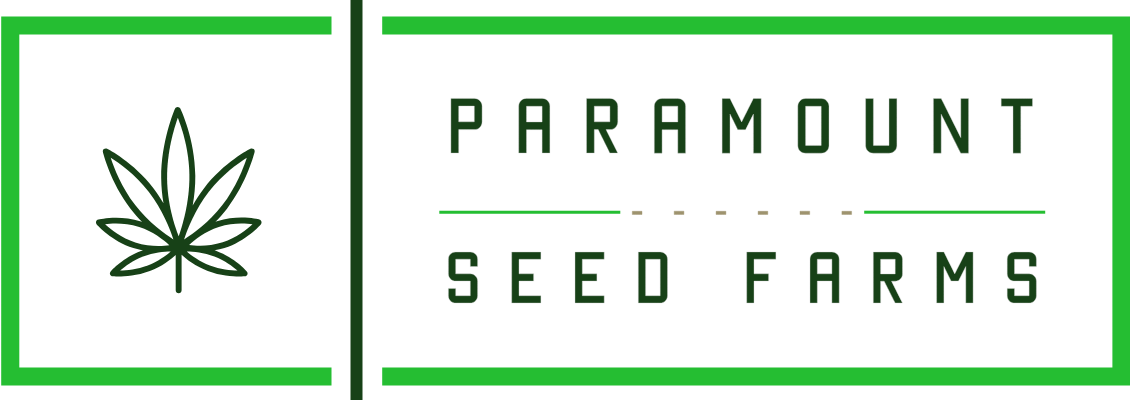Vapor Pressure Deficit (VPD) is a crucial factor that influences plant growth and productivity. Understanding the optimal VPD range for different plant growth stages is essential for maximizing yields and ensuring healthy plant development. In this detailed analysis, we will explore the concept of VPD, how to calculate it, its importance in plant physiology, and how to adjust VPD to achieve optimal results.
Key Takeaways:
- VPD plays a critical role in plant growth and development.
- Calculating VPD involves determining the difference between the saturated vapor pressure and the actual vapor pressure of the air.
- Proper VPD management can optimize stomatal opening, CO2 uptake, and nutrient absorption.
- The optimal VPD range varies depending on the stage of plant growth.
- Monitoring and adjusting VPD can help maintain optimal conditions for plant health and growth.
What is VPD?
VPD, or Vapor Pressure Deficit, is a measure of the difference between the amount of moisture in the air and how much moisture the air can hold when it is saturated. It plays a crucial role in plant physiology, affecting various aspects of plant growth and development. VPD is influenced by temperature and relative humidity, and understanding how to calculate and control VPD is key to creating optimal growing conditions for plants.
VPD directly impacts plant transpiration rates, stomatal opening, CO2 uptake, nutrient intake, and overall plant stress. By maintaining the optimal VPD range, growers can maximize yields and ensure healthy plant development. Proper VPD management optimizes stomatal opening, which enhances CO2 uptake and photosynthesis, leading to faster growth rates and improved nutrient absorption.
Controlling VPD involves adjusting temperature, humidity, and airflow in indoor growing environments. Additionally, misting or fogging systems can be used to increase humidity when VPD is too low. By carefully monitoring and adjusting these factors, growers can maintain optimal VPD conditions throughout the entire growth cycle, resulting in improved plant performance and higher yields.

Understanding the Importance of VPD
VPD is vital for plant health and productivity as it affects plant stress levels and disease risk. A well-regulated VPD can reduce plant stress, minimizing the risk of diseases such as mold and rot. By maintaining an optimal VPD range, growers can ensure that their plants are healthy, resilient, and better able to withstand environmental challenges.
Monitoring VPD in real-time is essential for maintaining optimal growing conditions. Various technologies, such as VPD sensors and data loggers, are available to help growers accurately measure and track VPD levels. With advanced software applications and mobile apps, growers can receive real-time VPD data and alerts, enabling them to make immediate adjustments as needed.
| VPD Impact | Benefits |
|---|---|
| Promotes optimal transpiration rates | Enhances nutrient uptake |
| Optimizes stomatal opening | Facilitates CO2 uptake |
| Reduces plant stress | Minimizes disease risk |
| Improves overall plant health | Maximizes yields |
Calculating VPD
Vapor Pressure Deficit (VPD) can be calculated by determining the difference between the saturated vapor pressure (SVP) and the actual vapor pressure (AVP) of the air. The SVP is determined by the air temperature, while the AVP is dependent on the relative humidity. By subtracting the AVP from the SVP, the VPD value can be obtained.
To calculate VPD, follow the formula:

Where:
- VPD is the Vapor Pressure Deficit
- SVP is the Saturated Vapor Pressure
- AVP is the Actual Vapor Pressure
There are various online calculators and charts available that can simplify VPD calculations. These calculators often allow for adjustments based on the specific environmental conditions and plant growth stage, providing accurate VPD values for optimal plant development.
| Temperature (°C) | Saturated Vapor Pressure (kPa) | Relative Humidity (%) | Actual Vapor Pressure (kPa) | Vapor Pressure Deficit (kPa) |
|---|---|---|---|---|
| 20 | 2.34 | 60 | 1.40 | 0.94 |
| 25 | 3.17 | 55 | 1.75 | 1.42 |
| 30 | 4.24 | 50 | 2.12 | 2.12 |
Importance of VPD in Plant Growth
Vapor Pressure Deficit (VPD) plays a crucial role in the growth and development of plants. Maintaining the optimal VPD range for each stage of plant growth is essential to ensure maximum productivity and plant health. A well-controlled VPD can result in several benefits, including increased yields, faster growth rates, and improved nutrient absorption.
One of the key advantages of controlling VPD is the optimization of stomatal opening. Stomata are small openings on the surface of leaves that regulate the exchange of gases between the plant and the atmosphere. By maintaining the ideal VPD range, growers can promote efficient stomatal opening and facilitate the uptake of carbon dioxide (CO2) for photosynthesis. This leads to enhanced plant growth and the production of carbohydrates for energy.
Another important aspect of VPD management is its impact on transpiration rates. Transpiration is the process by which plants lose water through their leaves. Proper VPD control helps prevent excessive transpiration, which can lead to the wilting of plants and nutrient deficiencies. By maintaining an optimal VPD range, growers can ensure that plants transpire at an optimal rate, keeping them hydrated and nutrient-rich.
| Benefits of VPD Control |
|---|
| Increased yields |
| Faster growth rates |
| Improved nutrient absorption |
| Optimized stomatal opening |
| Efficient carbon dioxide uptake |
| Prevention of excessive transpiration |
By understanding the importance of VPD in plant growth and implementing effective VPD control techniques, growers can create optimal growing conditions, leading to healthier plants and higher crop yields. With careful monitoring and adjustment of temperature, humidity, and airflow, growers can maintain the ideal VPD range throughout the different stages of plant growth, maximizing the overall performance and productivity of their crops.
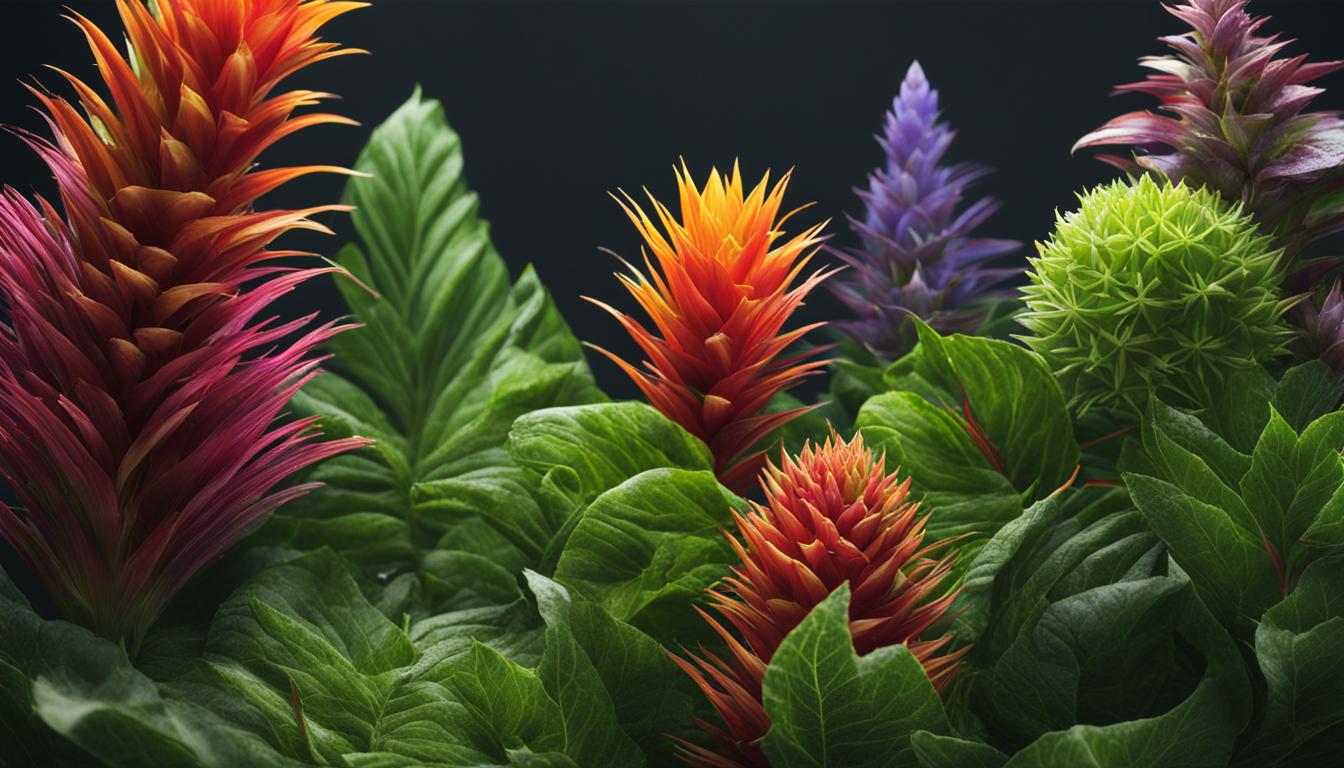
VPD during Different Stages of Growth
Optimal Vapor Pressure Deficit (VPD) ranges vary depending on the stage of plant growth. It is crucial to understand the ideal VPD values for each stage to provide the best growing conditions for your plants. Let’s take a closer look at the recommended VPD ranges for seedlings and clones, the vegetative stage, the flowering stage, and even during the night period.
Optimal VPD for Seedlings and Clones
During the early stages of plant growth, such as seedlings and clones, it is recommended to maintain a slightly lower VPD range. This helps minimize stress and promotes healthy root development. Aim for a VPD range between X and Y to ensure the delicate young plants have the proper moisture balance and can establish a strong foundation for future growth.
Ideal VPD in the Veg Stage
In the vegetative stage, when plants focus on leaf and stem growth, it is essential to provide a moderate VPD range. This allows for optimal transpiration rates and nutrient absorption. Aim for a VPD range between X and Y to support vigorous vegetative growth and ensure your plants have the resources they need to thrive.
Ideal VPD in the Flowering Stage
As plants transition into the flowering stage, they require slightly higher VPD ranges to support robust flower development. A VPD range between X and Y is recommended during this stage. This higher VPD range facilitates the optimal uptake of nutrients and encourages the formation of dense, resinous buds. It is important to monitor VPD closely to ensure optimal flowering conditions.
VPD at Night
During the night period, when plants undergo respiration instead of photosynthesis, VPD requirements differ. It is crucial to maintain a slightly higher VPD range during this time to prevent excessive transpiration and water loss. Aim for a VPD range between X and Y to provide plants with the right balance of moisture, allowing them to recover and prepare for the following day’s growth.
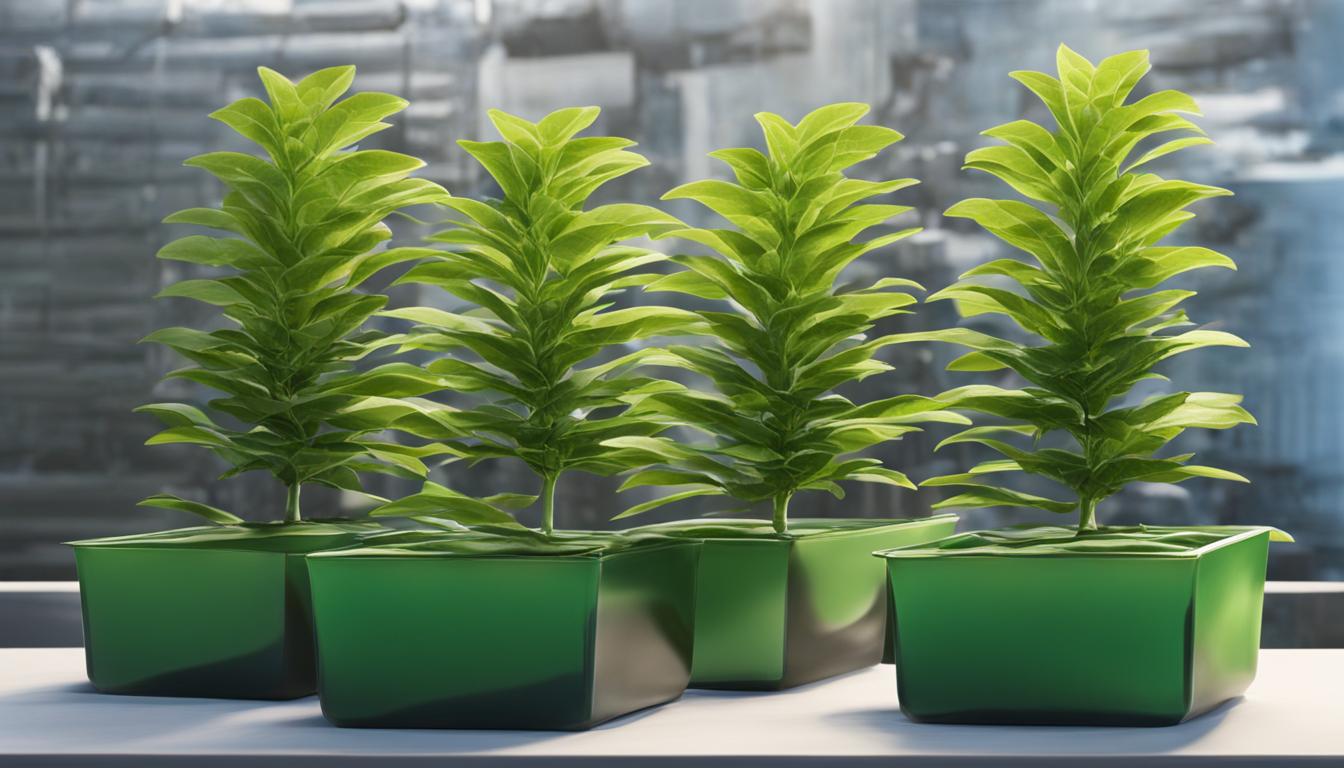
| Growth Stage | Recommended VPD Range |
|---|---|
| Seedlings and Clones | X – Y |
| Vegetative Stage | X – Y |
| Flowering Stage | X – Y |
| Night Period | X – Y |
VPD Control Techniques
Controlling Vapor Pressure Deficit (VPD) is crucial for maintaining optimal growing conditions and maximizing plant growth and productivity. There are several effective VPD control methods that growers can implement to ensure the ideal VPD range for their plants.
Temperature and Humidity Adjustment
One of the primary ways to control VPD is by adjusting temperature and humidity levels in the growing environment. By increasing or decreasing the temperature, growers can influence the saturation vapor pressure and thus affect the VPD. Higher temperatures result in higher VPD values, while lower temperatures lead to lower VPD values. Similarly, adjusting humidity levels can help regulate VPD. Increasing humidity through misting or fogging systems can raise the actual vapor pressure, reducing VPD. Conversely, using dehumidifiers can lower humidity and increase VPD.
Airflow and Ventilation
Proper airflow and ventilation play a crucial role in VPD control. Adequate airflow helps prevent stagnant air and creates a more uniform environment, promoting evaporation and transpiration. It can be achieved through the use of fans or ventilation systems strategically placed to ensure air movement throughout the growing area. This helps maintain consistent temperature and humidity levels, consequently controlling VPD.
Watering and Irrigation Management
Effective watering and irrigation management can also contribute to VPD control. The frequency and duration of watering should be adjusted based on the VPD range for each growth stage. Monitoring soil moisture levels and avoiding overwatering can help maintain optimal VPD conditions. Additionally, utilizing drip irrigation or other precise irrigation techniques can deliver water directly to the plant’s root zone, reducing the risk of excessive evaporation and maintaining a balanced VPD.
| VPD Control Techniques | |
|---|---|
| 1 | Temperature and Humidity Adjustment |
| 2 | Airflow and Ventilation |
| 3 | Watering and Irrigation Management |
Implementing these VPD control techniques can help growers achieve optimal VPD conditions throughout the entire plant growth cycle. However, it is important to consider the specific requirements of each plant species and adjust the VPD control methods accordingly. By carefully managing VPD, growers can ensure that their plants thrive in an environment that promotes healthy growth, increased yields, and overall plant well-being.
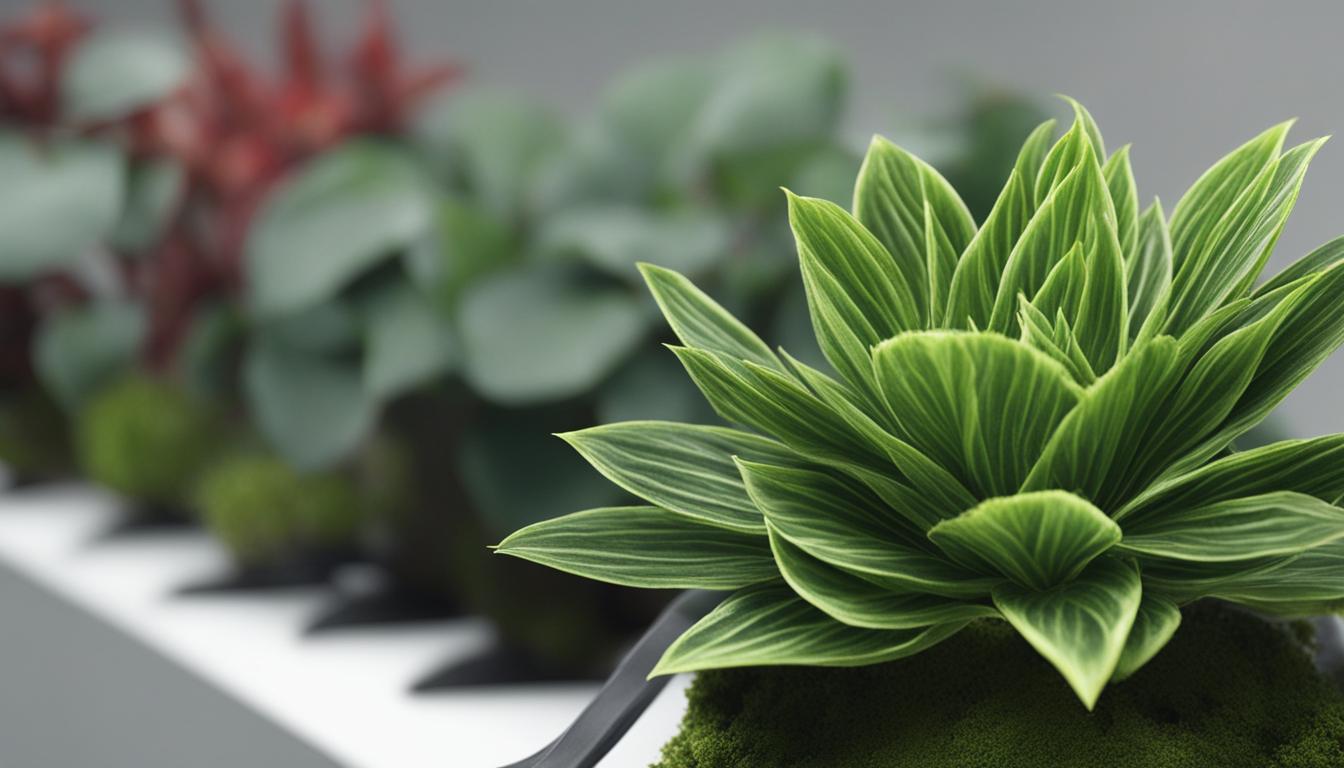
Impact of VPD on Plant Health
Vapor Pressure Deficit (VPD) has a significant impact on plant health and overall well-being. By understanding the relationship between VPD and plant stress, growers can effectively prevent diseases and ensure optimal growth conditions. When VPD is not properly regulated, plants may experience excessive transpiration, leading to wilting and nutrient deficiencies.
Controlling VPD is crucial for preventing plant stress and minimizing the risk of diseases such as mold and rot. By maintaining an optimal VPD range, growers can create an environment that promotes healthy and resilient plants. With proper VPD management, plants are better equipped to withstand environmental challenges and exhibit improved resistance to pests and pathogens.
By carefully monitoring and adjusting VPD levels throughout different growth stages, growers can provide their plants with the ideal conditions for growth and development. This includes maintaining the right balance of temperature, humidity, and airflow to achieve the desired VPD range. Incorporating advanced technologies such as VPD sensors and data loggers can further enhance the accuracy and efficiency of VPD control.
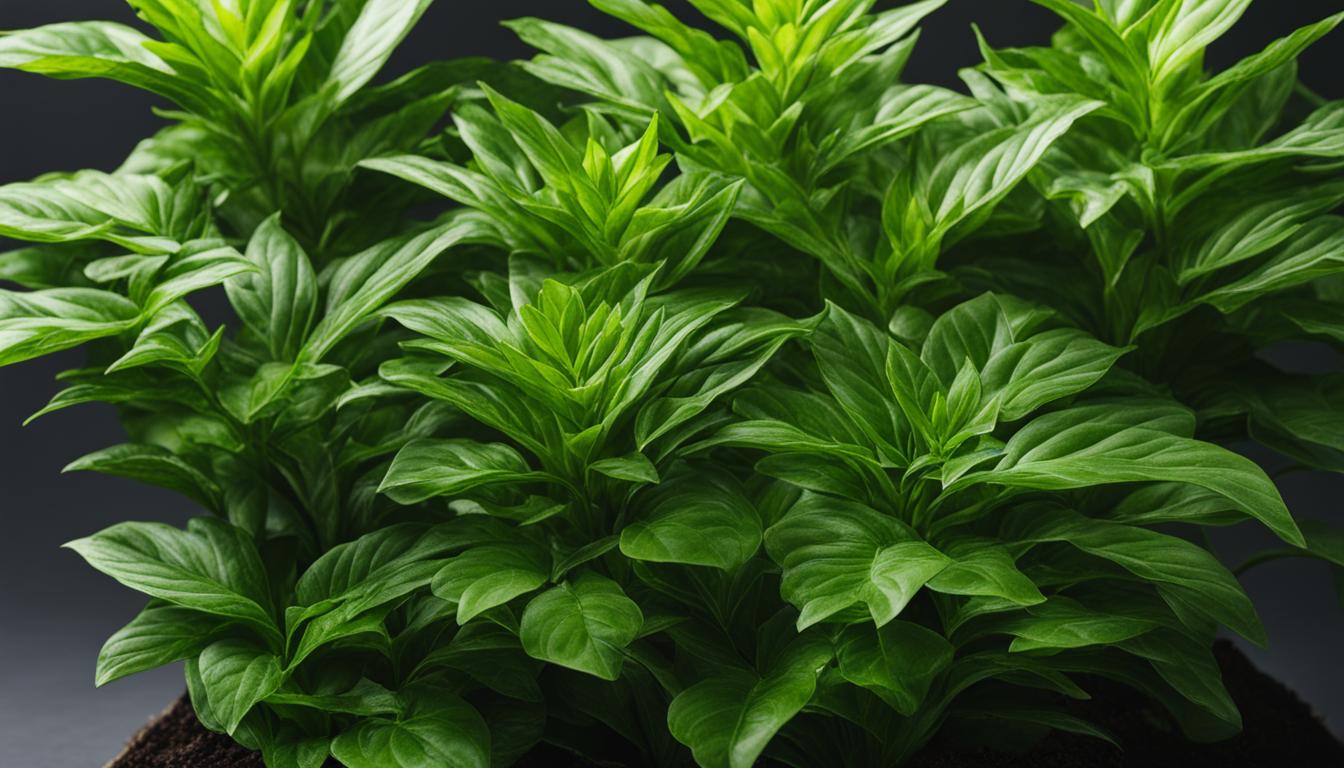
| Growth Stage | Optimal VPD Range |
|---|---|
| Seedlings and Clones | Low to Moderate |
| Vegetative Stage | Moderate |
| Flowering Stage | Moderate to High |
In summary, maintaining an optimal VPD range is essential for plant health and disease prevention. By understanding the impact of VPD on plant stress and employing effective VPD control techniques, growers can create an environment that promotes healthy growth and maximizes plant productivity.
VPD Monitoring and Technology
Monitoring Vapor Pressure Deficit (VPD) is key to optimizing plant growth and ensuring optimal growing conditions. With the advancement of technology, growers now have access to a range of VPD monitoring tools and technologies that allow for real-time tracking and adjustments. VPD sensors and data loggers are specifically designed to measure and record VPD levels accurately. These sensors can be integrated into automated systems to control temperature, humidity, and airflow, ensuring that VPD remains within the desired range.
VPD tracking technology provides growers with valuable insights into the environmental conditions that affect plant growth. By analyzing VPD data, growers can identify patterns, trends, and any deviations from the optimal VPD range. This information enables growers to make informed decisions and adjustments to maintain consistent and ideal VPD levels.
In addition to VPD sensors, advanced software applications and mobile applications allow growers to access real-time VPD data and receive alerts. This allows for immediate adjustments to environmental conditions, such as temperature and humidity, ensuring that plants are provided with the best possible growing environment.
Benefits of VPD Monitoring and Technology
VPD monitoring and technology offer several benefits to growers. Firstly, it provides accurate and precise measurements of VPD levels, eliminating the guesswork and allowing for precise adjustments. By maintaining optimal VPD levels, growers can maximize plant health, growth rates, and overall productivity.
Secondly, VPD monitoring helps growers identify and troubleshoot any environmental issues that may be affecting plant growth. Whether it’s inadequate temperature control or insufficient humidity, VPD data can highlight these problems and guide growers in rectifying them.
Lastly, VPD monitoring and technology enable growers to track and analyze VPD data over time. This historical data can provide valuable insights into plant performance, allowing growers to make data-driven decisions for future cultivation cycles and optimize their growing practices.
| Benefits of VPD Monitoring and Technology |
|---|
| Accurate and precise VPD measurements |
| Identification and troubleshooting of environmental issues |
| Tracking and analysis of VPD data over time |
Vapor Pressure Deficit (VPD) monitoring and technology provide growers with the tools they need to create and maintain the optimal growing conditions for their plants. By utilizing VPD sensors, data loggers, and advanced software applications, growers can accurately measure, track, and adjust VPD levels in real-time. This technology empowers growers to optimize plant health, growth rates, and overall productivity, leading to successful cultivation and higher yields.
Conclusion
In conclusion, Vapor Pressure Deficit (VPD) is a crucial element in maximizing plant growth and productivity. By understanding the optimal VPD range for different stages of plant development, growers can create optimal growing conditions and achieve higher yields.
Controlling VPD involves calculating the VPD value by determining the difference between saturated vapor pressure (SVP) and actual vapor pressure (AVP) of the air. This calculation can be easily done using online calculators or charts. It is also important to adjust VPD through temperature, humidity, and airflow control techniques to maintain the ideal VPD range for each growth stage.
By maintaining the optimal VPD range, growers can promote faster growth rates, improve nutrient absorption, and optimize stomatal opening and CO2 uptake. Proper VPD management also reduces plant stress and minimizes the risk of diseases. Monitoring VPD with advanced technologies like VPD sensors and data loggers allows growers to make real-time adjustments and ensure optimal growing conditions.
In summary, understanding and controlling VPD is key to achieving optimum plant health and maximizing yields. By implementing VPD control techniques and utilizing modern technologies, growers can create the best possible conditions in their indoor or controlled environment agriculture (CEA) setups and achieve exceptional results.
